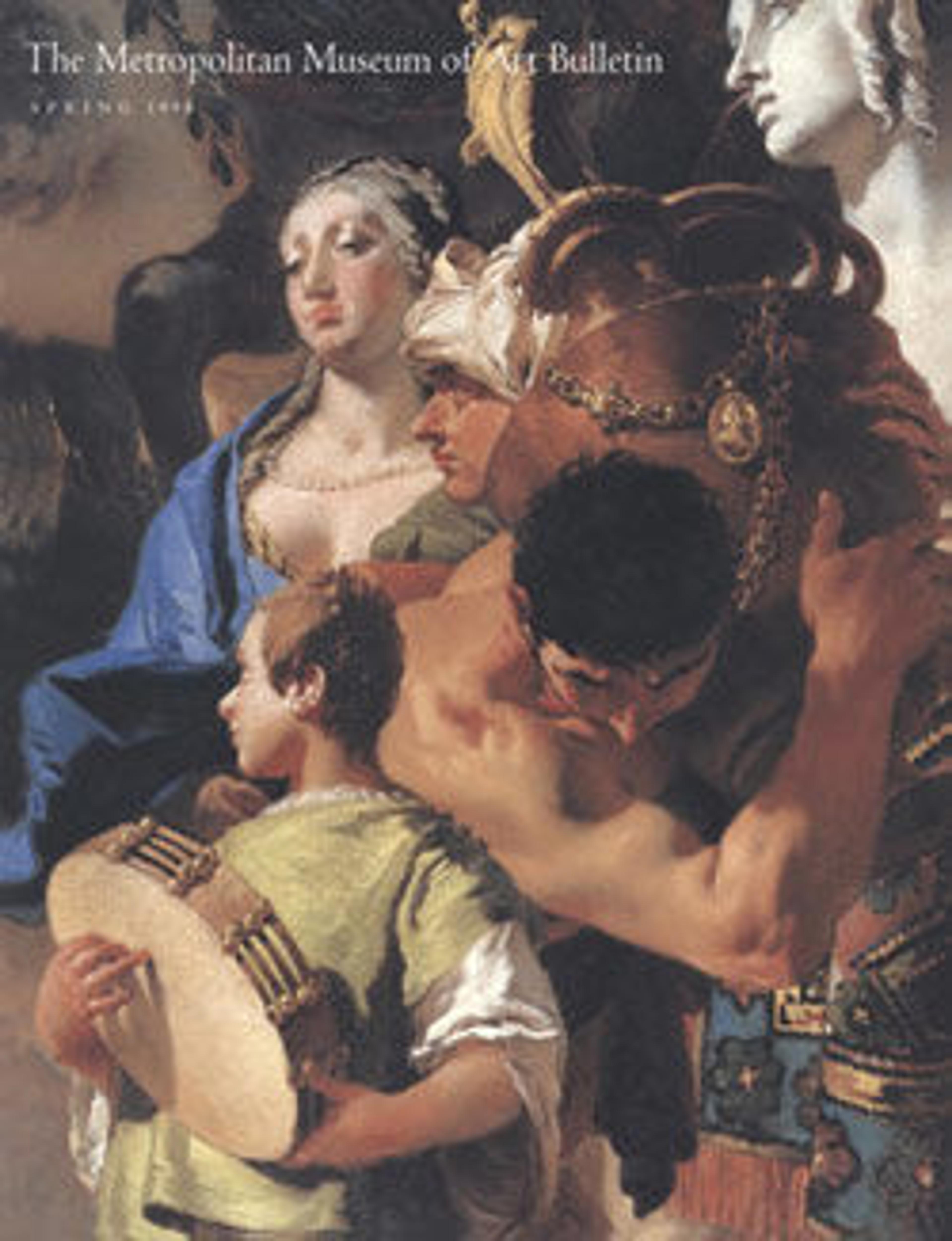Allegorical Figures Representing Virtue and Abundance
Like the other frescoes in this room, this large roundel is from the Palazzo Valle Marchesini Sala in Vicenza. It simulates a sculptural relief and decorated the ceiling of a long gallery, whose lateral walls were embellished with the allegorical figures of the liberal arts. It depicts two figures representing Virtue, on the left, and Abundance, with the cornucopia, on the right.
Artwork Details
- Title: Allegorical Figures Representing Virtue and Abundance
- Artist: Giovanni Battista Tiepolo (Italian, Venice 1696–1770 Madrid) and Workshop
- Date: 1760
- Medium: Fresco, transferred to canvas
- Dimensions: Diameter 114 in. (289.6 cm)
- Classification: Paintings
- Credit Line: Bequest of Grace Rainey Rogers, 1943
- Object Number: 43.85.12
- Curatorial Department: European Paintings
More Artwork
Research Resources
The Met provides unparalleled resources for research and welcomes an international community of students and scholars. The Met's Open Access API is where creators and researchers can connect to the The Met collection. Open Access data and public domain images are available for unrestricted commercial and noncommercial use without permission or fee.
To request images under copyright and other restrictions, please use this Image Request form.
Feedback
We continue to research and examine historical and cultural context for objects in The Met collection. If you have comments or questions about this object record, please contact us using the form below. The Museum looks forward to receiving your comments.
